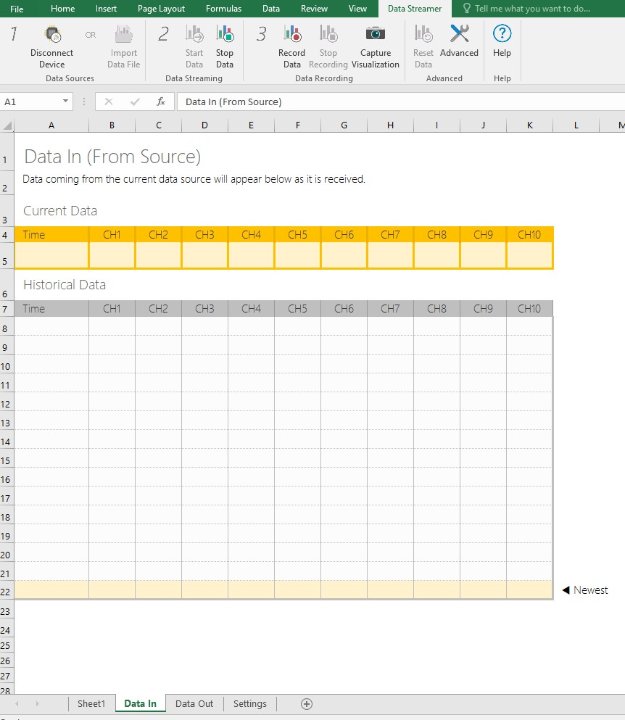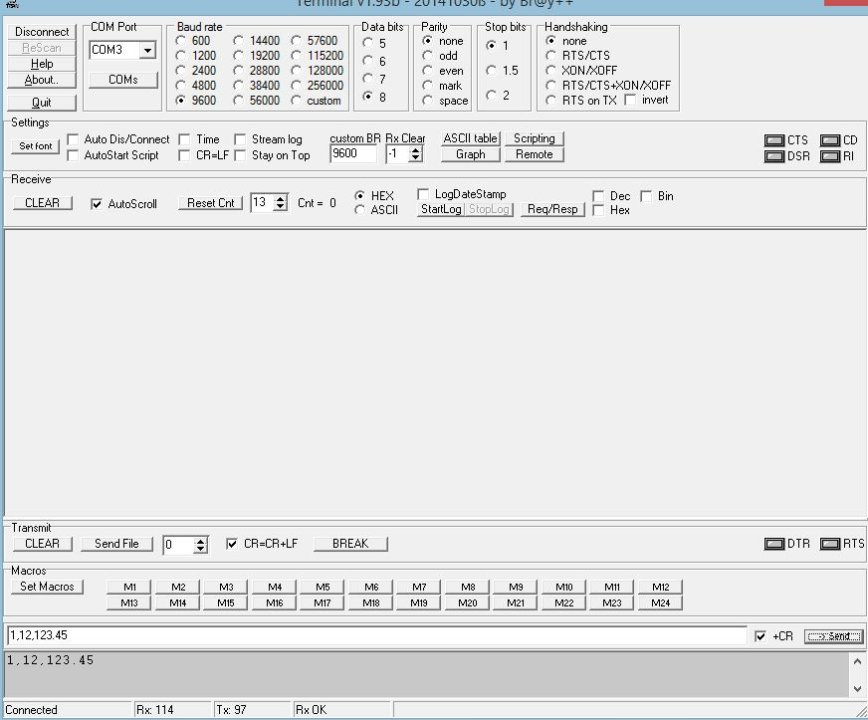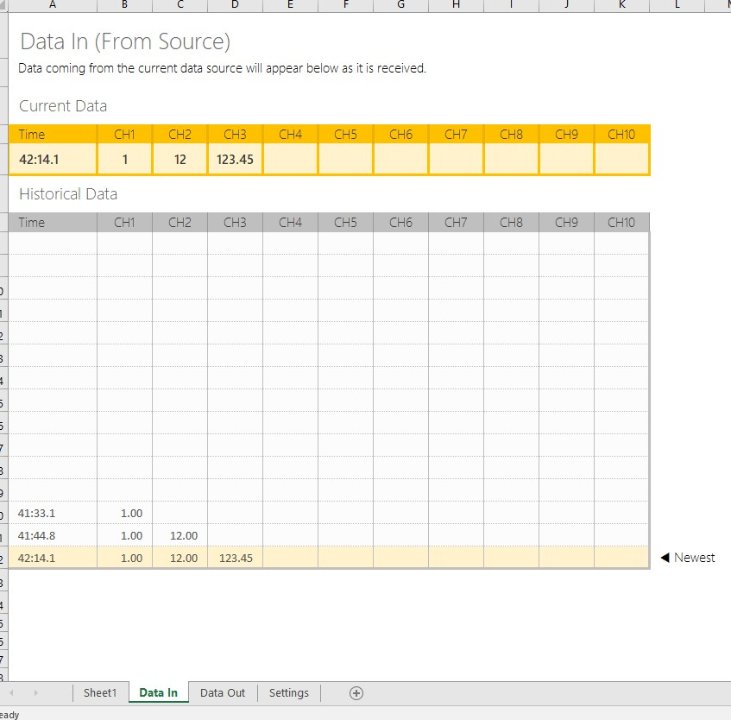Hi
After a bit of faffing about I managed to install Excel 2016 on my W10 machine. This does not come with data streamer but you can download it from Microsoft. You MUST be using W10 or newer.
Once installed, when you open Excel you should then see a Data Streamer tab on the ribbon. If not go to File>Options>Add Ins, then go to Manage Options and select Coms then click "Go". You should then see Data Streamer in the list. Make sure it is selected.
For testing I had my PC and laptop connected using two Serial-USB adapters connected together (Tx-Rx) running 9600 8-1-N and everything default.
My laptop had Terminal running but any should work (e.g. PuTTY).
The format of the data stream is CSV followed by a Carraige Return to signal the end of packet.
In Excel I wasn't interested in creating nice fancy charts, only to see if it worked.
Clicking the Data Streamer button on the ribbon brings up the DS Header with a few numbered options. 1-Data Sources, 2=Data Steaming and 3=Data Recording.
Clicking Connect a Device brings up your available options. I selected my Serial-USB device which then brought up a window informing of my choice and to click Start Data to begin recording.
Clicking Start Data changes the sheet to the below. This is default, customise to suit your application. You can see it is a 11 x Columns (Time Stamp + 10 fields) by 15 x Rows.

- DS-1.jpg (61.7 KiB) Viewed 6020 times
It is now awaiting your data. It is worthwhile formatting cells to suit your data, I chose Number to two decimal places.
As mentioned it uses CSV with CR to signal the end of packet.
In Terminal (remember to connect, won't tell you how long it took to remember that) I first sent 1 + CR, then 1,12 +CR then 1,12,123.45+CR

- Terminal-1.JPG (95.02 KiB) Viewed 6020 times
and got the following


- Captured Data.jpg (60.33 KiB) Viewed 6020 times
So it is quite simple really to use.
At the bottom is a Data Out tab and any data you enter here will be sent to your connected device immediately as CSV. You will need accept and process within your MCU though.
I'll knockup a FC chart later and test when I'm in front of hardware, but I'm not expecting much problems.
Regards
EDIT
In TimeStamp above, the default cell format was selected which is showing elapsed time from starting to record. You can change that to 24Hr (for example) and it gives you the time based on OS time (e.g. 13:06:52).
Edit (again)
Created a little chart to post data from a DHT11 to Data Streamer. Will post once I test, but that may not be until a day or two.